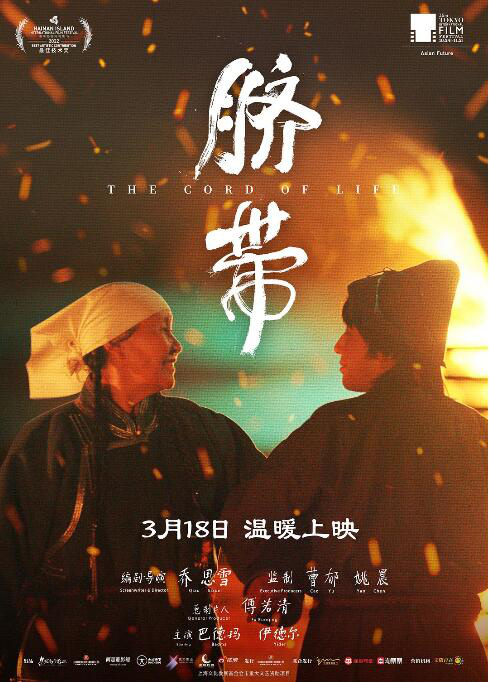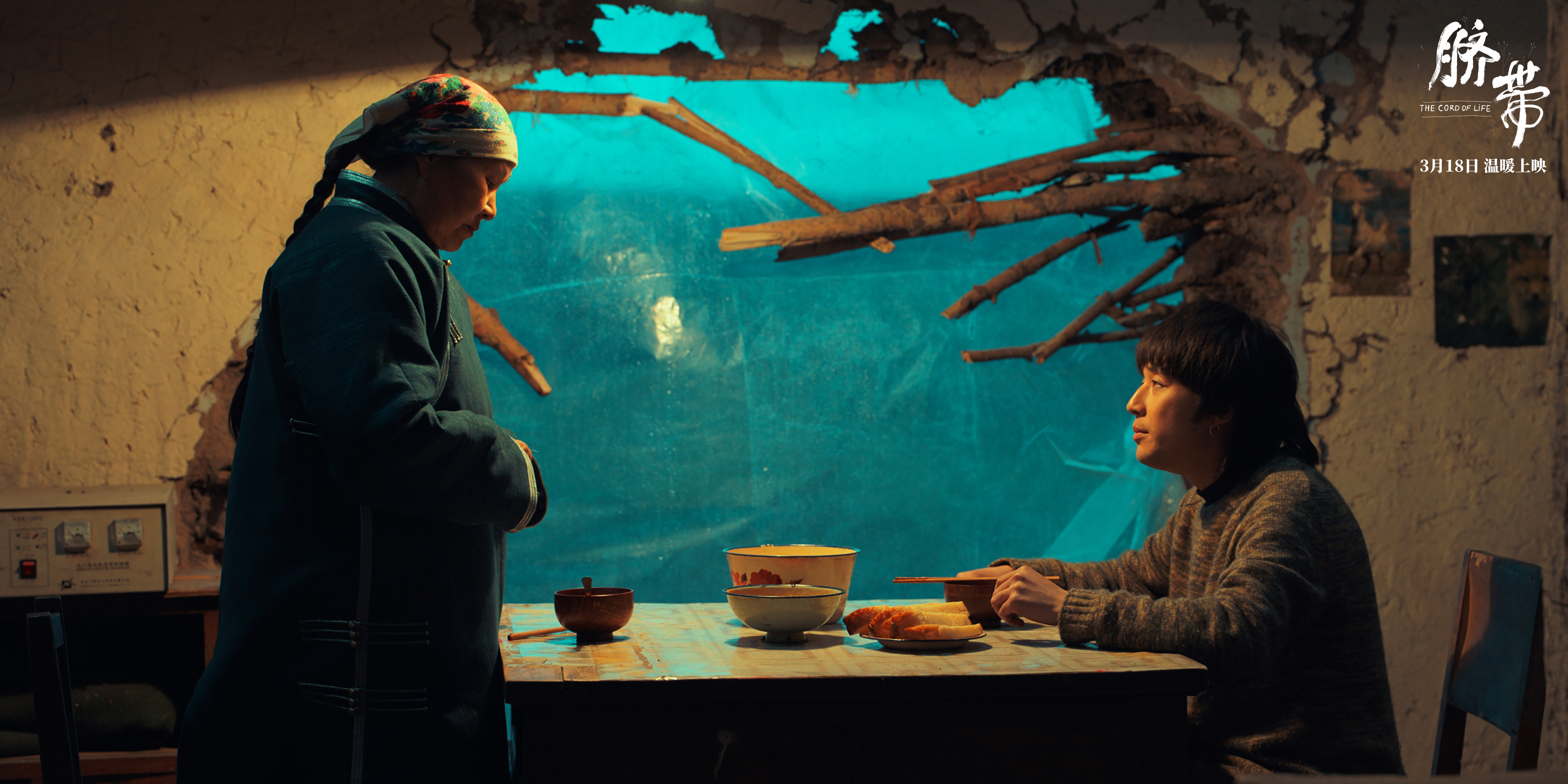The film Umbilical Cord: "Magic Reality" of Unique Color Aesthetics
Original title: Umbilical Cord, "Magic Reality" in Color Aesthetics

When commercial blockbusters become the norm in the film industry, small and medium-sized films are exploring their own creative mode and survival strategy, trying to get rid of the aesthetic taste of the isolated minority. The film is just such a small and medium-sized film that tries to make a breakthrough in the market.
In fact, there are many small and medium-sized movies in China. Far away, it is a miracle of small-budget movies. In addition, everything has been successful. Although there are many successful models, in the overall box office market, the performance of small and medium-cost movies is not satisfactory. According to relevant data, the number of small and medium-cost movies accounts for more than 80% of domestic movies, but the average box office is only one tenth of that of medium-cost movies and one percent of that of high-cost movies. How to bring the audience’s aesthetic taste and market business principles into the creative process more, so that small and medium-sized films will not be hidden in the film market and be too divorced from the current mass consumerism audio-visual culture when facing blockbusters, has become a problem that small and medium-sized films must solve.
Due to the production cost, small and medium-sized films are naturally at a disadvantage in texture, but the film Umbilical Cord is the opposite. The attempts or breakthroughs made are more manifested in a kind of "magical reality" created by digital color matching, which makes the film avoid the production constraints of small and medium-sized films in shooting, art and other hardware links and strive to present a large texture.
The most intuitive feeling of "reality" and "magic" in the film is the cool blue-green visual atmosphere of the grassland. This color is based on the color matching method of Hollywood film three-color printing in the 1950s, and it is completed by digital software processing in the later stage. Through the first-level color matching and the second-level color matching, the color presented in the film jumps out of the grassland in the traditional impression. There is no shot made by CG technology in the whole film, and all the pictures are taken in real scenes. Therefore, the first step of the film is to adjust the overall light and color of the grassland scene, that is, to "restore" the color of the scene in the picture with digital color matching, such as the painting feeling of the sky and the bright lake where the yurt is located, so that the elements that play an atmosphere in the film can "shine" on their own in the picture to show the emotional atmosphere that the creator wants to convey through the picture space.

The visual preference of the cool blue-green color of the film is the artistic creation of the color of the film screen by the creator, including color restoration, brightness, contrast and so on. Goethe once described that blue gives people a certain feeling in perception and creates an extraordinary and unspeakable effect for the eyes. In the scene of eating with his mother in Arus, the cold blue-green tone penetrated by the crashed wall hole created the image color "atmosphere", which not only showed the scenes and objects in the film, but also surpassed the real "magic" color and made the audience receive the emotion that the creator wanted to convey.

As one of the links of digital software technology in the later period, digital color matching pays attention to the adjustment of light and color in each part of the picture. For example, in the film, Arrus is looking for his mother in the Woods with a flashlight: the dark forest shows absolute darkness, giving people a sense of oppression and fear; The flashlight with the only light source presents the scattered light source when the eyes look at the light source at night, and retains the color information in the picture in the dark. This uncontrollable natural light requires very high photography. In contrast, Arus and his mother rode motorcycles across the grassland. No matter the blue-green sky or the yellow grassland in the picture, there was an unbearable light, which made people feel uneasy. Colors had layers and plots in such a space, creating a unique space aesthetics.
Generally speaking, the film Umbilical Cord breaks through some limitations of medium-and small-budget movies in terms of configuration, layout and technology with a visual effect, and gives the current medium-and small-budget movies a creative mode and commercial potential of "changing from small to large" by means of digital cameras and digital software processing in the China movie market supported by commercial blockbusters.
In the final analysis, a good work still depends on the ability to tell stories to win. The story of "Umbilical Cord" is very simple. It tells the story of Arrus, a musician who drifted to the north and a Mongolian youth, who returned to his hometown of Inner Mongolia because his mother suffered from Alz Harmo’s disease. He was dissatisfied with the way his brother kept his mother at home, and decided to take her back to Hulunbeier grassland to find her remembered home. In order to prevent her mother from getting lost, Arus tied a rope around their waist, which was like an umbilical cord, and led them to roam deep into the grassland. In the starry sky, the mother said goodbye to her son with gratitude, and she finally returned to her hometown. Arus also gained the power of peace and love in her hometown with abundant water and grass.
In fact, death is a heavy topic, especially in the face of the life and death of loved ones, and it is an unbearable scene, but there is death when there is life, and it is the relative of life and death that is a complete life. "Umbilical Cord" balances the topic of life and death well, and tells the story of life. In this film, the director tries to make life and death light and poetic. With romantic scenes, through the interaction between relatives and colorful scenes, the film reduces the oppressive feeling of facing death, which makes people feel the true meaning of family companionship and experience the process of life when they pay attention to the plot. In addition, the film borrows the concept of umbilical cord to express a concept of life and death cycle, from the umbilical cord between the mother and the child during the baby’s gestation to the "umbilical cord" when the child dies to prevent the mother from getting lost. This is a cycle and a grateful return.
Whether it is companionship, going home or the reincarnation of life and death, the medium and small-budget film Umbilical Cord gives people a calm experience of looking at life through good rhythm and wonderful scenes. It is a sincere work in art cinema, and it will certainly bring a new feeling and thinking to the audience after watching it. (Author: Xie Yang)